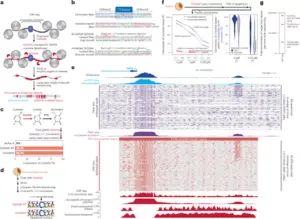
The launch of MiniMax-M2 has positioned it as a dominant player in the realm of open-source large language models (LLMs), particularly for enterprise applications focused on agentic tool use. Developed by the Chinese startup MiniMax, this new model excels in its ability to autonomously utilize external software capabilities—such as web searches and custom applications—requiring minimal human input. This significant advancement is available under a permissive MIT License, allowing developers to deploy, retrain, and use the model freely for commercial purposes.
Enterprises can access MiniMax-M2 via platforms like Hugging Face, GitHub, and ModelScope, as well as through MiniMax’s own API. The model supports both OpenAI and Anthropic API standards, which facilitates easy migration for users of proprietary AI systems looking to transition to MiniMax’s offerings.
Independent evaluations from Artificial Analysis, a reputable generative AI benchmarking organization, indicate that MiniMax-M2 ranks first among open-weight systems globally on the Intelligence Index. This index measures reasoning, coding, and task execution performance. In agentic benchmarks, MiniMax-M2 reported scores of τ2-Bench 77.2, BrowseComp 44.0, and FinSearchComp-global 65.5. These results position it competitively with leading proprietary models such as GPT-5 and Claude Sonnet 4.5, establishing MiniMax-M2 as the highest-performing open model for real-world agentic and tool-calling tasks.
Implications for Enterprises and the AI Landscape
The architecture of MiniMax-M2 is based on an efficient Mixture-of-Experts (MoE) design, providing high-level capabilities for both agentic and developer workflows while ensuring practicality for enterprise deployment. With just 10 billion active parameters out of a total of 230 billion, the model enables enterprises to run advanced reasoning and automation tasks on fewer GPUs. This efficiency translates to significant cost savings compared to the traditional licensing and infrastructure fees associated with proprietary systems.
According to Artificial Analysis, MiniMax-M2 showcases strengths that extend beyond intelligence scores. Its performance in benchmarks for coding, reasoning, and agentic tool use suggests it can effectively support organizations requiring AI systems that can plan, execute, and verify complex workflows. As noted by LLM engineer Pierre-Carl Langlais, also known as Alexander Doria, “MiniMax [is] making a case for mastering the technology end-to-end to get actual agentic automation.”
Performance and Benchmarking Highlights
MiniMax-M2’s technical architecture allows for efficient, responsive execution of tasks, optimizing latency and compute requirements while maintaining a high level of general intelligence. The model can be efficiently served on as few as four NVIDIA H100 GPUs at FP8 precision, making it accessible for mid-sized organizations or departmental AI initiatives.
Data from Artificial Analysis reveals MiniMax-M2’s benchmark performance against other leading models, including GPT-5, Claude Sonnet 4.5, Gemini 2.5 Pro, and DeepSeek-V3.2. In various categories, MiniMax-M2 demonstrated top or near-top performance, achieving:
– SWE-bench Verified: 69.4 (compared to GPT-5’s 74.9)
– ArtifactsBench: 66.8 (surpassing Claude Sonnet 4.5)
– τ2-Bench: 77.2 (close to GPT-5’s 80.1)
– BrowseComp: 44.0 (leading among other open models)
– FinSearchComp-global: 65.5 (best among tested open-weight systems)
These impressive results underscore MiniMax-M2’s ability to handle complex, tool-augmented tasks across various languages and environments, crucial for automated support, research and development, and data analysis within enterprises.
MiniMax-M2’s intelligence profile is further validated in the latest Artificial Analysis Intelligence Index v3.0, where it scored 61 points, again ranking as the highest open-weight model globally, closely following GPT-5 and Grok 4. This consistent performance suggests a reliable foundation suitable for integration into diverse enterprise applications, such as software engineering and customer support systems.
Designed for seamless integration into developer workflows, MiniMax-M2 facilitates multi-file code edits, automated testing, and regression repair directly within integrated development environments or continuous integration/continuous deployment (CI/CD) pipelines. The model is also adept at agentic planning, managing tasks that involve web searches, command execution, and API calls while maintaining traceability in its reasoning.
As organizations increasingly seek autonomous developer agents and AI-augmented operational tools, MiniMax-M2 offers significant advantages. Its benchmark results indicate resilience in dealing with incomplete data and recovering from intermediate errors, enhancing reliability in production environments.
MiniMax-M2 features an interleaved thinking format that preserves visible reasoning traces, which is essential for agentic reasoning. MiniMax encourages developers to retain these segments when passing conversation history to maintain logical continuity. The company also provides comprehensive resources, including a Tool Calling Guide on Hugging Face, to assist developers in connecting external tools and APIs through structured calls.
Enterprises can access MiniMax-M2 through the MiniMax Open Platform API and the MiniMax Agent interface, currently available free for a limited time. The company recommends using SGLang and vLLM for effective serving, both of which support the model’s unique reasoning and tool-calling structure.
Artificial Analysis has noted that MiniMax’s API pricing is highly competitive, set at $0.30 per million input tokens and $1.20 per million output tokens. This pricing strategy positions MiniMax-M2 as an attractive option within the open-model ecosystem, particularly in comparison to other proprietary offerings.
MiniMax’s Rise in the AI Sector
Founded in a rapidly evolving tech landscape, MiniMax has quickly established itself as a significant player in China’s AI industry. With backing from major firms like Alibaba and Tencent, the company gained international recognition for its advancements in AI video generation and a series of open-weight LLMs tailored for developers and enterprises.
MiniMax first captured global attention in late 2024 with its AI video generation tool, video-01, which demonstrated remarkable capabilities in creating dynamic scenes. This breakthrough prompted widespread interest, with notable viral content showcasing its ability to generate lifelike movements.
The company shifted focus to long-context language modeling in early 2025, introducing the MiniMax-01 series with unprecedented context window capabilities. Following the success of MiniMax-M1, which focused on long-context reasoning, MiniMax continues to develop cost-effective, open-weight models designed for practical applications in enterprise settings.
The release of MiniMax-M2 emphasizes the ongoing leadership of Chinese research groups in developing open-weight models. It reflects a broader trend towards efficient, agentic capabilities that prioritize practical utility over sheer model size. For enterprises, this means access to state-of-the-art models that can be audited and fine-tuned, ensuring transparency and adaptability in various applications.
With a commitment to innovation, MiniMax is positioning itself as a key player in the global AI landscape, combining cutting-edge research with practical engineering solutions. The emergence of MiniMax-M2 further solidifies its status as a leading provider of enterprise-ready open AI models.






